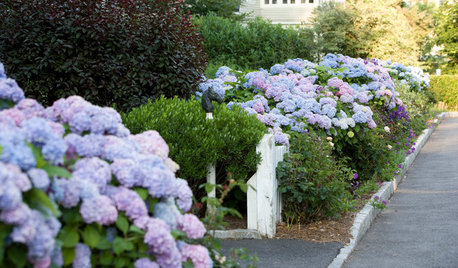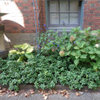Please help me rescue my hydrangeas!
Lilyfinch z9a Murrieta Ca
14 years ago
Related Stories

10 Ways Symmetry Can Rescue Your Room
Balancing elements of your decor can add drama, unify a collection or downplay a TV screen. Here’s how to do it
Full Story
HOUZZ TOURSHouzz Tour: Creative Design Moves Rescue an Island Cottage
Facing down mold and nicotine, two industrious Canadian designers transform an uninhabitable wreck into an artful getaway
Full Story
PETSHouzz TV: Watch These Rescued Cats Make a House Their Playland
Spirals, catwalks, tunnels and platforms create a superhighway inside this home in Southern California
Full Story
ARCHITECTURESaving Grace: Reconstruction Rescues a Michigan Barn
Working-farm rustic goes stylishly modern, thanks to the loving reinvention efforts of a determined homeowner
Full Story
LIVING ROOMSRoom of the Day: Rescuing a Beverly Hills Living Room
Fretwork panels, textured neutrals and artfully exotic touches turn an unexciting room into a feast for the eyes
Full Story
FLOWERSWhy You Should Give Hydrangeas a Place in Your Yard
The exuberant mop-headed beauties evoke dreams of an endless summer by the sea
Full Story
PETS6 Ways to Help Your Dog and Landscape Play Nicely Together
Keep your prized plantings intact and your dog happy too, with this wisdom from an expert gardener and dog guardian
Full Story
SUMMER GARDENINGHouzz Call: Please Show Us Your Summer Garden!
Share pictures of your home and yard this summer — we’d love to feature them in an upcoming story
Full Story
GARDENING GUIDESGreat Design Plant: Snowberry Pleases Year-Round
Bright spring foliage, pretty summer flowers, white berries in winter ... Symphoricarpos albus is a sight to behold in every season
Full Story
DECORATING GUIDES10 Bedroom Design Ideas to Please Him and Her
Blend colors and styles to create a harmonious sanctuary for two, using these examples and tips
Full Story







Lilyfinch z9a Murrieta CaOriginal Author
luis_pr
Related Professionals
Kyle Landscape Architects & Landscape Designers · Middletown Landscape Contractors · Anderson Landscape Contractors · Athens Landscape Contractors · Byram Landscape Contractors · Chelmsford Landscape Contractors · Davidson Landscape Contractors · Old Saybrook Landscape Contractors · Red Oak Landscape Contractors · Secaucus Landscape Contractors · Smyrna Landscape Contractors · South Farmingdale Landscape Contractors · East Brunswick Siding & Exteriors · Four Corners Siding & Exteriors · Scotch Plains Siding & ExteriorsLilyfinch z9a Murrieta CaOriginal Author
luis_pr